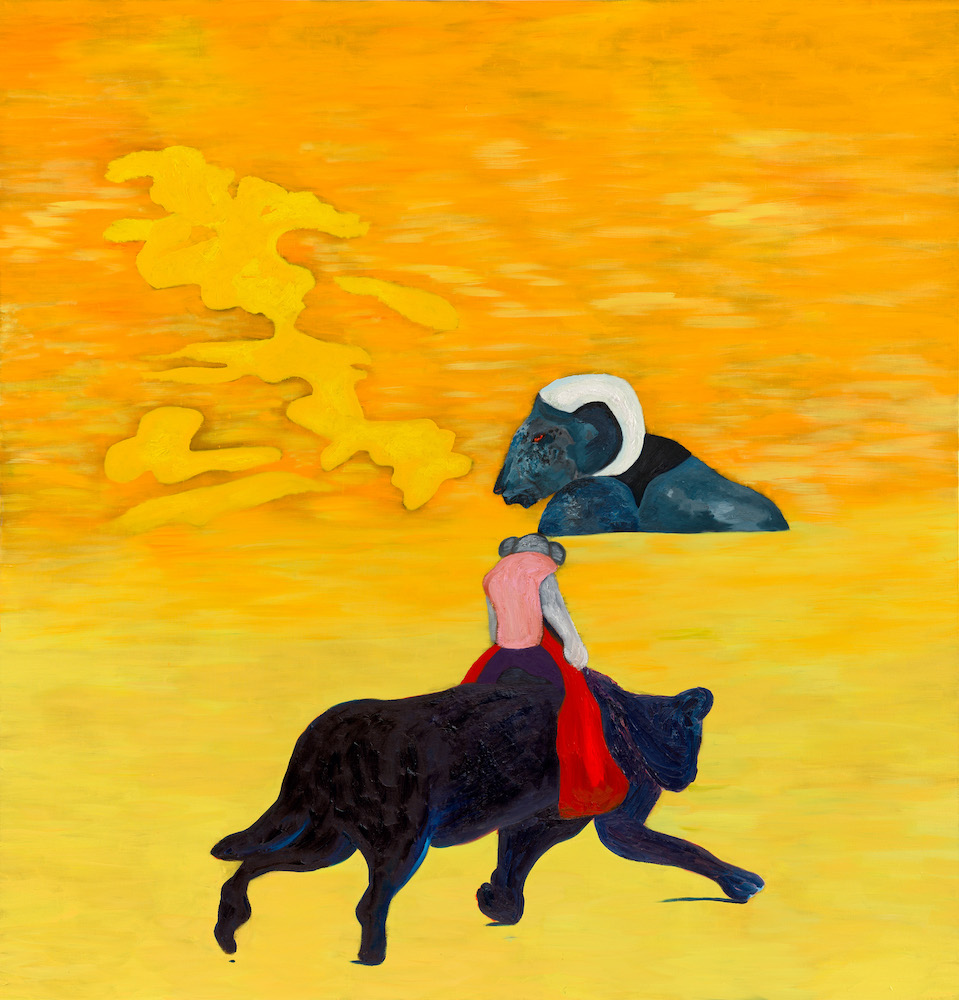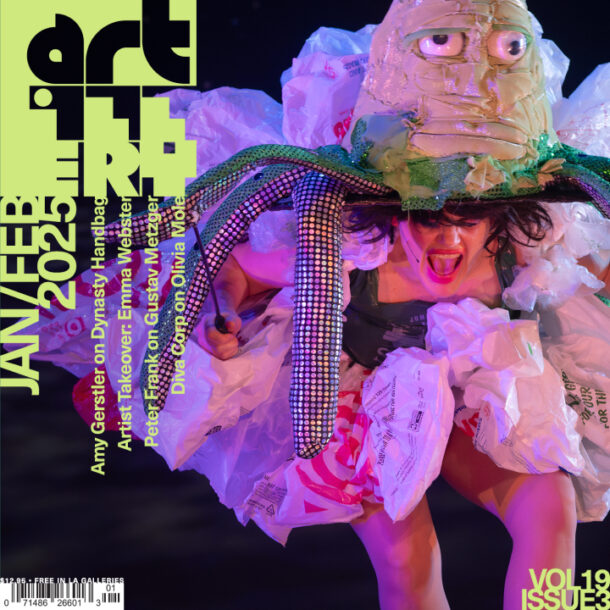There’s an easy attractiveness to Florian Krewer’s paintings that obscures the complex formations of desire within them. At times they seem stripped of everything but their earnestness, but then at others, they are scattered with bold and reckless impulses. There is also a weirdness Krewer employs, a formal perversity that takes it off road and out of the authentic realm of Beverly Buchanan, or the direct and undecorated painting of Katherine Bradford or Henry Taylor, and into a space that looks over its own shoulder. There’s something in his exhibition “cold tears released” that suggests these works are not as immediate and gratifying as they suggest, and are instead a distant memory or simulacrum. Part of this quality, of second-guessing their own sincerity, emerges through Krewer’s use of dreams as subject matter; but also it is found in the specific ways he dreams through the recognizable aesthetics of counterculture. The overall effect is that these works mimic the punk culture that they depict, and generate the same teenaged loops of desiring acceptance while engendering rejection. Krewer captures what it is to feel romantically jaded, and having feelings too big to know how to handle them.
Krewer’s work links painting itself to puberty: the reckless drives, the impulsivity, the unaimed force of adolescence. Paintings such as down under (2025) commit oil to the confusing rage and loneliness of youth—of wanting to be invited into the warm glow of society while deeply rejecting what it stands for. The dark figures of young men in closed circles visible in the painting capture the virile energy of that age. fire man (2024) captures this and carries over the energy of Krewer’s past work through the ways that his bodies fall and lift into heavy edges and bold formal shapes and angles. But the scenes he depicts in “cold tears released” often communicate an anxious pause—the moment of teenage gatherings, when no one seems to know what to do next. They edge with this uncertain anticipation, between exhilaration and anxiety, violence and tenderness, posturing and self-doubt. The individuals are susceptible to the choices of the group, and the gravity and pull of the scene’s drive.

Florian Krewer, lean together, 2025. Courtesy of Michael Werner.
Krewer isn’t the first to associate painting with the aesthetics of skater culture or counterculture itself. What sets Krewer apart is how his subject expresses itself in his handling of the paint, like the moments in some of the faces when the oil paint is applied in thick globs, straight from the tube, and is allowed to sit until it develops skin. But the reckless impulse of thick paint gets undermined the next day. Krewer goes back and drags a brush through the field of oily pustules, breaking and pulling their skin along with it. It takes you back not only to the early uncertainty of adolescence and the momentary feelings of certainty, but also to all of the indecision in our first attempts at painting. The bravura of one day is second-guessed, scraped down, and passed over in the next. Krewer’s larger works always stray from their studies. It is moments like these that suggest painting is maybe a second and perpetual puberty that keeps the focus drifting—hot, and without a direct object of focus.
Krewer sees something to hold onto within the sincerity of the emo kid, sensing a posture of an artist within their reluctant shrug. It is certainly an alternative to the current libido of our authoritarian present. The skater kid pushes away out of a different kind of purity than the fascist. For the counterculture of the punk, it is a purity of the scene that is sought, a wariness to anyone who might not fully appreciate it for what it is, a hesitancy to accept those who don’t risk something of themselves to be a part of it. But the figures’ skin in Krewer’s paintings often feels dead. The youth carries on as a corpse of what it once was, as romantic zombies looking for 90s thrills in what New York and Cologne maybe used to be, and more realistically, never was.

Florian Krewer, killing in the name, 2025. Courtesy of Michael Werner.
Often, Krewer’s paintings seem to evoke this simulacral desire for the transgressive symbols of the past, but it also elicits the stronger sense of spread and contamination, and how distant this world feels from our own. With social media and the ways that its algorithms are designed, there is no exterior to culture left. Countercultures bleed and fade, or cease to exist altogether. In Krewer’s world, there are still ways to mark yourself as punk. The skateboard is still an anarchic signifier. The hoodie—hasn’t yet been worn by Zuckerberg and the technolibertarians of the Silicon Valley era. But Krewer is aware that the carnival has spilled out into the street, or, in the case of lucid dreams (2025), the masked and monstrous mob has become an inert mound. The mosh pit is now a frozen Ensor. No culture is emitted from its energy. Canetti is appropriate to mention here, and the darkness of mobs and crowds swelling into a new communal identity. Within the dark carnival, Krewer often seems to position the tight-knit friend group of teenagers as something still longed for, and barely beyond reach.
Instead of nostalgia, I think the work pictures the temporal shift of offline to online as worth investigating. Here was a moment where the teenagers encircling and looking down on us could have stayed their course, or more urgently, stayed outside. It is still hard to imagine a punk who is terminally online, and maybe that is the punk’s contemporary relevance. The weight and wealth of experience is to be made in real life—in diners and at skate parks, where awkward silences form themselves into jokes and stunts. Krewer suggests it is still possible to find an awed experience with nature and its beautiful animals. There are rams and flamingos and endangered polar bears that speckle our world, the animals that appear frequently in dreams that make life vivid with their presence.
There is still tenderness. In night eyes (2024), one figure pushes a man in a wheelchair down the middle of midnight street; the shadow behind them is an impossible white. There is an important care that is required and develops within the outer reaches. There is sensitivity beyond the frame. Whether the counterculture still exists or whether it now only lingers as memory, or if it never was what we wish it were, it is the care and tenderness that stays.


